Blog three of four on the Chinese film industry in Tibet #gabriellafitte
THE LAND OF TIBET IS THE MOST EXPRESSIVE CHARACTER YOU SEE
Chinese movie directors increasingly make Tibet the set. It helps a lot if you film in Tibet, and if the landscapes and people of Tibet do much of the work of carrying the actual meaning.
For Tibetans, this raises interesting questions. What does Tibet have to say? What does the cinematographer deliver, as the emotional message conveyed by Tibetan settings and Tibetan actors in bit parts? Is Tibet merely exotic, or is its presence onscreen freighted with meaning?
Sometimes, the answers are straightforward. In Zhang Yang’s Soul on a String the upper Tibet setting instantly stands in for the badlands of America. The arid canyons and windswept uplands of the Changtang take us to the mythical American West, we know in a flash a man’s gotta do what a man’s gotta do, even if the plot device is a silly mishmash of Chinese fantasies about the mysteries of Tibet.
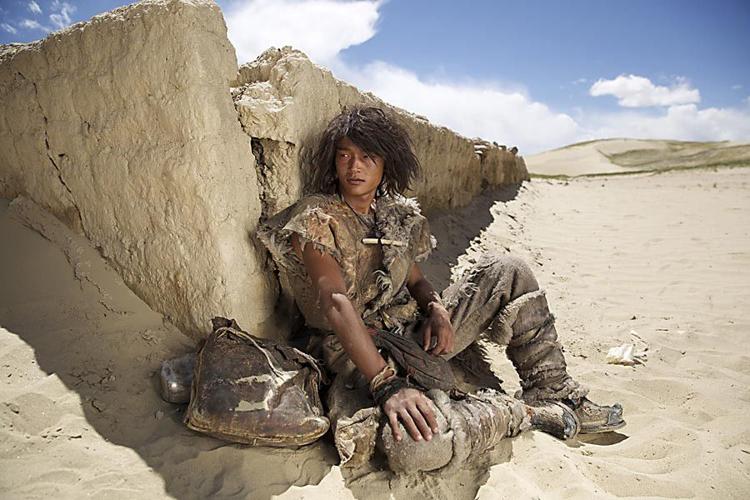
Soul on a String tells the story of Taibei, a Tibetan wanderer from a distant time who discovers a sacred stone in the mouth of a deer and begins a quest to return the stone to its rightful home on the holy mountain of the Buddha’s handprint. Ok, that’s a pretty ropey premise, but as a basis for lots of lone treks through dunes, ravines, mountains and endless plains, and lots of fights, it’s standard issue. It’s the action, and the tension leading to explosive action that counts. It’s a Western after all.
A SINO-FRENCH GAY ROMANCE IN LITHANG
Then there’s Wang Chao’s Looking for Rohmer, the most recent of the Chinese movies shot in Tibet, around Kham Lithang. This gay romance has had a troubled passage through the censors, which delayed its release for years, slashed it to 83 minutes, with a complete name change from the 2015 Seeking McCartney to the 2018 Looking for Rohmer. The delay and the cuts were fatal. As a result, this is a movie that has disappeared without a trace, surviving only on pirate platforms: https://ok.ru/video/1172877347405
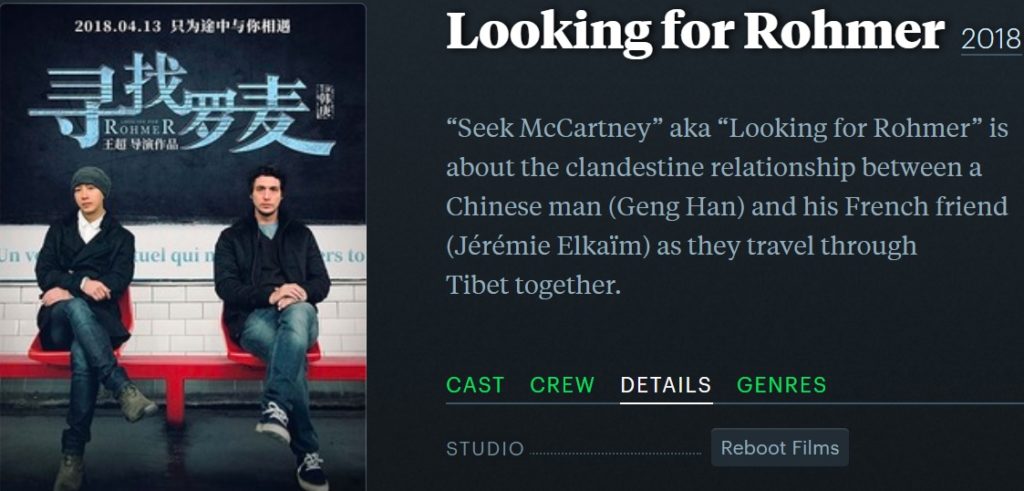
For Tibetans, however, this Sino-French coproduction is worth a closer look, because Tibetan landscapes and Khampas play a big role, not just as scene setters or exotic backdrops.
From the opening moment we are in a bleak, frigid Tibet, sweeping along a road flanked by the snow peaks that killed this love, the grieving survivor in close up. 34 minutes later, after much exposition, set in Paris as well as Beijing, we are back on that road into the Tibetan mountains near Lithang, where this romance so discreetly blossoms. Cut to dark interior shots, as our grieving lover sighs and suffers.
How do we know we are still in Tibet? On the soundtrack a woman’s voice melodiously chants dharani in Tibetanised Sanskrit, then a sudden cut to a parked police car, lights flashing. A Tibetan man shuffles into shot, and prostrates. And prostrates. We never discover anything about him, he remains as faceless and enigmatic as the empty police car, as the two protagonists meet on either side. This is Tibet as mood music, with archetypal Tibetan scenes standing in for the yearnings of the men for each other, and the danger in the flashing lights. Tibet does the emotional work we see only fleetingly on the faces of the two men drawn to each other.
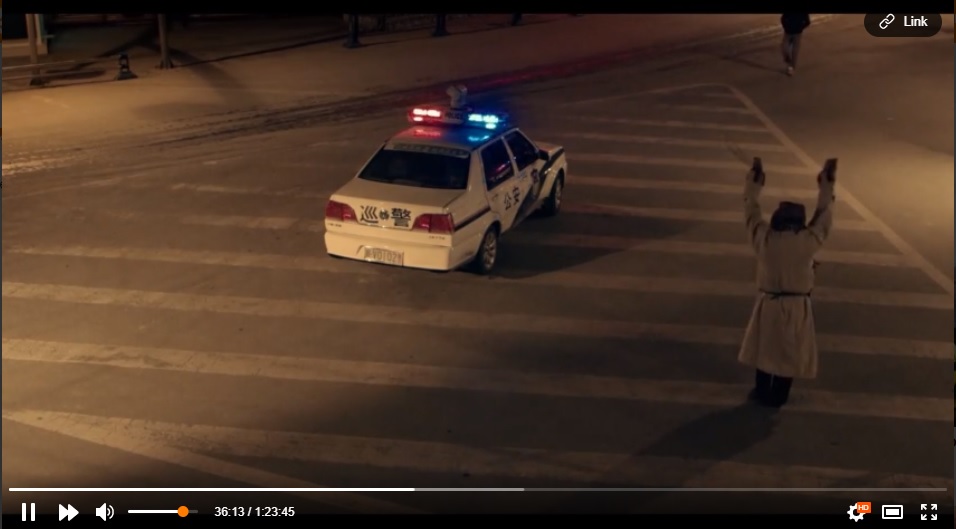
A moment later we are on the road to Dartsedo (Kangding in Chinese) in eastern Tibet. Suddenly we are wandering into a monastic courtyard, where the monks energetically debate Madhyamaka logic on the nature of reality, externalising the interior musing of the grieving Han protagonist on what is reality or illusion. Again it’s Tibet that provides meaning, momentum, exposition, and a foretaste of the existential issues.
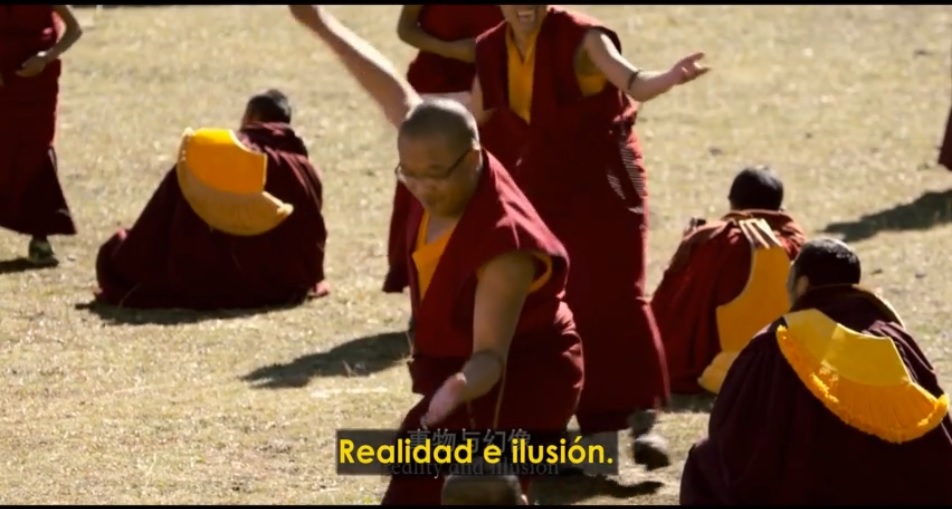
Later, after a return to Paris, a Lhamo dancer awaits his turn, and meets our two leads. The dancer, in wig and elaborate costume, is as near to a crossdresser as we are going to get: again Tibet tells us the subtext.
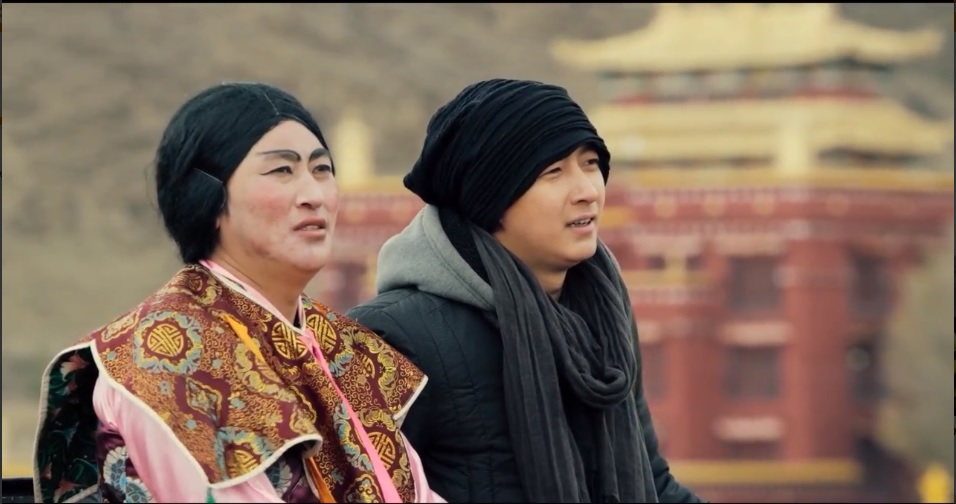
CLIMACTIC TIBET
Zhao Jie, our protagonist joins a band of jongleur Tibetan minstrels for a few joyous minutes, as they truck their act from pasture to pasture, enacting a Tibetan mystery play on the meaning of everything. Rapturously our hero transcends his urban reserve, merrily joining in, at last one with himself, the land, the dance, the great love of his life. The elegant mudras of Lhamo gesturing take on a feminine cast. Tibet is the land of the possible, an alternative universe where Tibetan men dress as women, always singing, always dancing.
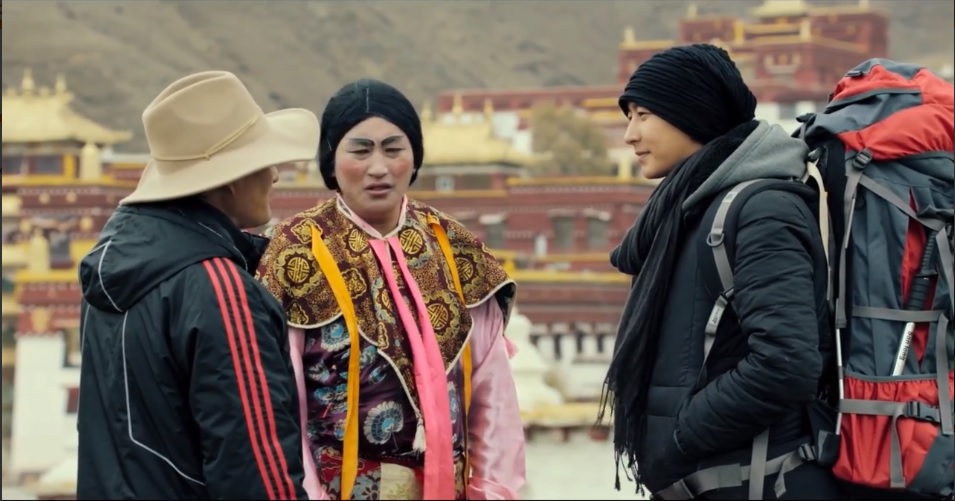
This is the homoerotic climax, a rapturous liminality among a Khampa brotherhood. Never has kneading tsampa in a bowl looked so sensuous, nor pouring hot milk heated on a campfire.
A princely Tibetan dancer and our urban Chinese seeker face off, each holding erect a shiny new prayer wheel in hand, with mountains faux and actual the dramatic set. Cut to an aspiration prayer soundtrack from a Lhamo performance, circle round the prop mountain, twirling the prayer wheel: everything Tibetan is a source of joy and fulfilment. Tibet has revealed its true face. We are almost 60 mins into this foreshortened, censored movie.
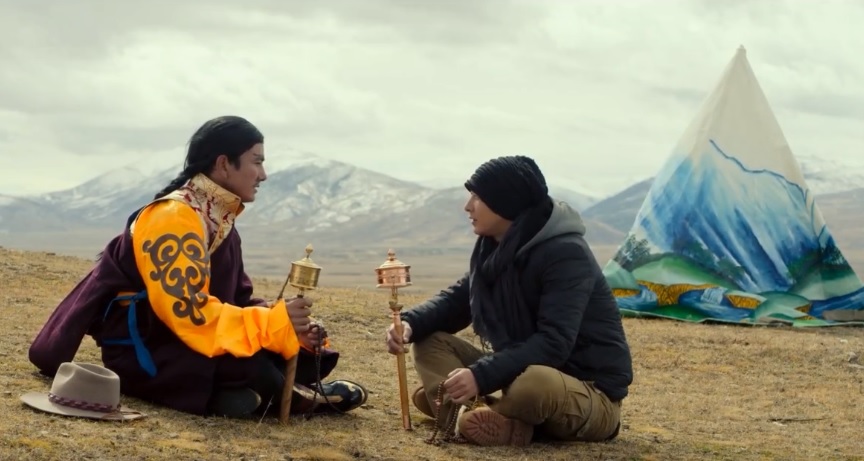
TIBET AS MOURNING
The truckload of jongleurs toils uphill, the brotherhood still singing. We are back to grief and yearning for the lost lover from across the sea. The soundtrack mingles the merry Khampas and the campest aria from Puccini’s Madama Butterfly:
One good day, we will
see
Arising a strand of smoke
Over the far horizon on the sea
And then the ship appears
And then the ship is white
It enters into the port, it rumbles its salute.
Do you see it? He is
coming!
I don’t go down to meet him, not I.
I stay upon the edge of the hill
And I wait a long time
but I do not grow weary of the long wait.
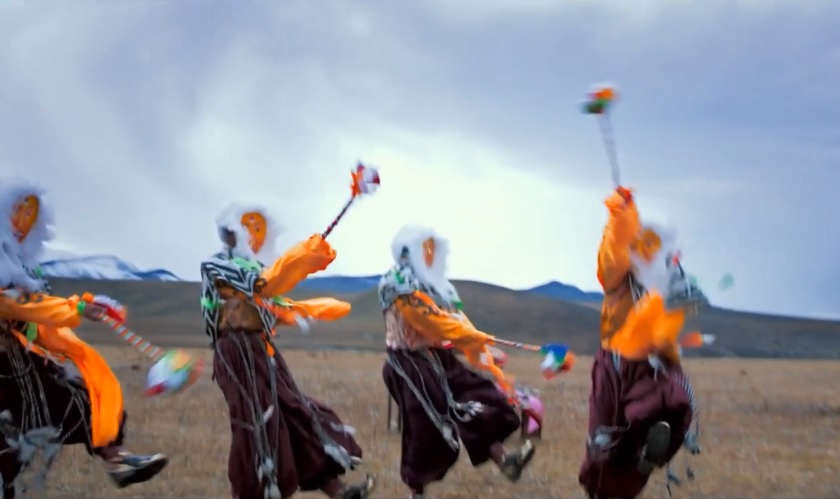
And leaving from the
crowded city,
A man, a little speck
Climbing the hill.
Who is it? Who is it?
And as he arrives
What will he say? What will he say?
He will call Butterfly from the distance
I without answering
Stay hidden
A little to tease him,
A little as to not die.
At the first meeting,
And then a little troubled
He will call, he will call
“Little one, dear wife
Blossom of orange”
The names he called me at his last coming.
Back in France, a Catholic Mass commemorates the life of the young Frenchman killed in the avalanche, consoling his mother; while in a Tibetan monastery, the monks, with his body, release him into another life. Rohmer will live forever, in the skies and mountains of Tibet. Finally we see him, the French object of desire, alive, in the monastery, reverently doing his kyab su chi, taking refuge. Like the old Tibetan man prostrating past the flashing police car, whose face we never see, our Frenchman does his chag tsälo prostration. He has found fulfilment. “Death is not nothingness. The soul lives on”, he tells us. ”If I die, I want to be like the Tibetans.”
It is winter above Lithang, snow everywhere. Rohmer, who was ready to die in the unseen avalanche, is finally cremated, as the vultures circle above, as the monks chant. “Only death can set you free.”
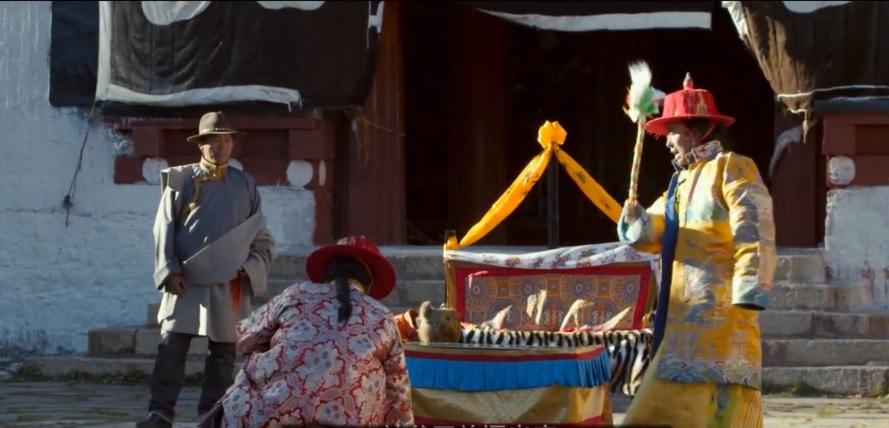
TIBET AS HEALING
Finally, again in France, we are at the vineyard, fondly remembering the dead Rohmer through his family photo album. As Zhao Jie is falling asleep, he is immediately back in Tibet, amid the flailing Lhamo dancers, revealing their true faces: Zhao Jie and his beloved Rohmer. Thus the movie ends.
Looking for Rohmer begins in desolate grief, expressed by bleak snowy Tibetan hills. It ends with grief healed by the transcendant power of love, expressed by exuberant Khampa dancers who welcome the French man and the Chinese man into their Lhamo dancing. The repeated intertwining of Madama Butterfly’s inconsolable grief and hopeless hope, with the plunging, swooping, swirling healing power of the Tibetan dancers, are a call and response, antiphonally positing grief and loss as the human condition, answered decisively by the Tibetan embrace of life, including a willingness to let go of it.
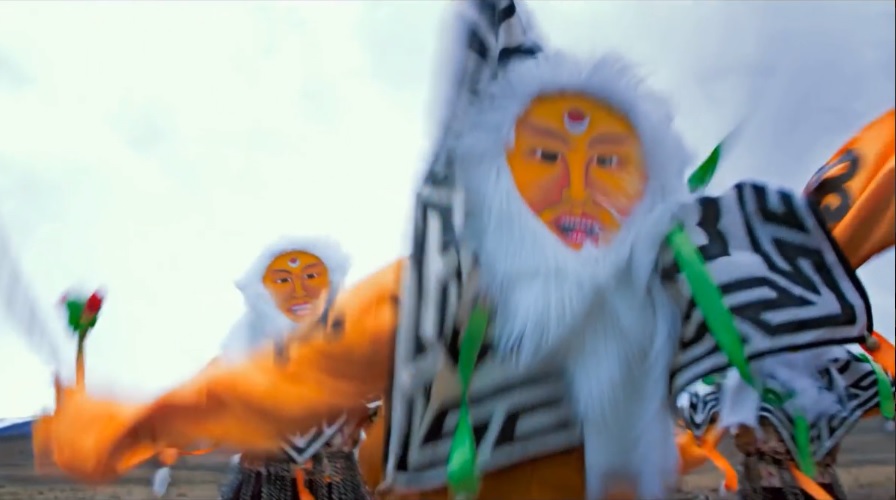
RISING WITHOUT A TRACE
Looking for Rohmer was released to screens early in 2018 and died immediately. “’I thought I’d come to the cinema to show support. But to my disappointment, I didn’t see much gay love. I only saw natural sceneries,’ commented one Weibo user. ‘The movie is still inside the closet,’ another user added.”
“’Finally! A movie that tells a gay story can be publicly screened — I’m definitely going to watch,’ one fan wrote in 2016, after the trailer was released. But Sixth Tone found that some opinions had changed after fans watched the movie. ‘I thought I was watching a documentary film about the scenery in Tibet’, wrote another user. ‘The product after censorship is a perfunctory, sucky movie.’”
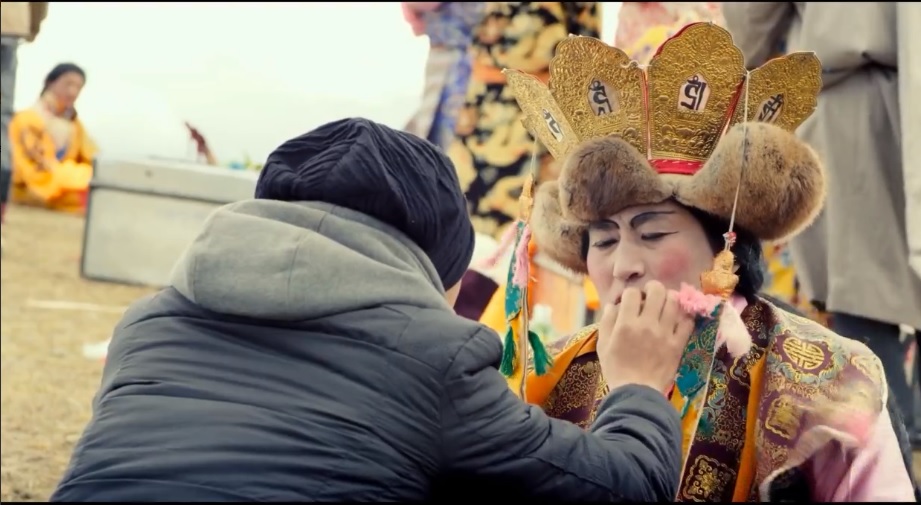
This movie was butchered by China’s homo-averse censors and completely failed commercially as a result. That’s sad for Chinese gay audiences expecting more, but it should now be seen through Tibetan eyes. Despite publicity in gay media, on the BBC and in The Economist, Looking for Rohmer flopped everywhere. Not gay enough for the audience waiting expectantly for years, too gay for the censors. Call Me by Your Name it’s not.
Because this movie did little to serve socialism with Chinese characteristics, it was mutilated and failed. But that is no reason for Tibetans to ignore it. Nor is today’s obsession with identity, appropriation and imperialism a reason to dismiss it as just another Chinese colonial power grab. There is more to film art than identity politics.
Of course, it does take it for granted that China’s Tibet is indeed China’s Tibet. In official narratives, including the many “patriotic” movies set in Tibet, the China’s Tibet story is the standard narrative of liberation from serfdom, into the light of progress, development, modernity and civilisation, all guided by China. All so predictable. Patriotic movies have become a genre of their own, zhuxuanlu 主旋律.
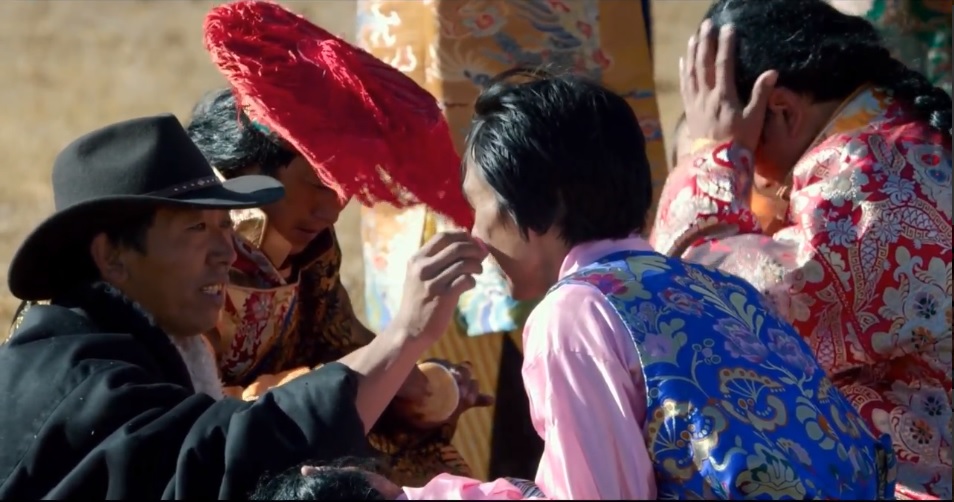
Maybe that is why there is plenty of room in the vastness of Tibet for narratives, told through Chinese eyes, as well as by Tibetan directors.
#gabriellafitte